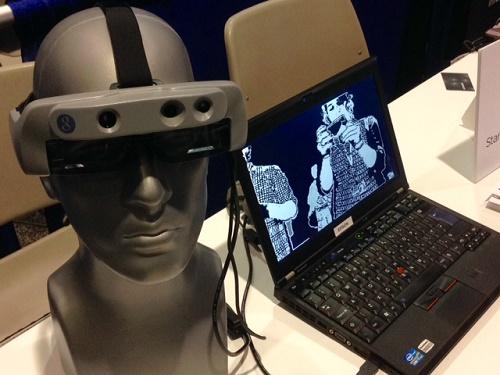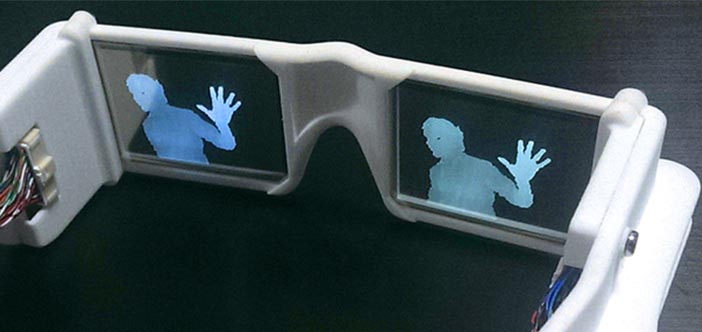Jessica Lipsky
EE Times
Three hundred or so visually challenged people are getting assistance in seeing the world around them, thanks to augmented reality goggles developed at the University of Oxford in England. Smart Specs by VA-ST use 3D mapping and depth sensing to provide object and facial recognition assistance.
 |
| Stephen Hicks. |
Many people who are blind actually have a bit of vision capability, said Stephen Hicks, a research fellow in neuroscience at Oxford University. People that are visually challenge could benefit from augmented reality, much like a deaf person can benefit from a hearing aid, amplifying the ability to distinguish shapes or distance.
In 2014, Hicks and his colleagues, won a £500,000 Google Impact Challenge to expand their research and create 100 pairs of the glasses to test on people with sight loss in their homes. VA-ST hopes to bring smart glasses to market at the end of 2016.
 |
| Smart Specs can show a natural color image or a simplified high contrast display (above) depending on the needs of the user. |
VA-ST’s augmented reality goggles use a color camera and an infrared structured light depth camera in tandem, then exaggerate the images those cameras capture with software. The color camera detects surface features such as shadows and textures, while the depth camera isolates nearby objects to make them easier to see against the background. To a fully sighted person, Smart Specs create a colorless version of the world where close objects are very bright.
Smart Specs pair commodity hardware such as Intel Realsense and the Kinect 3D motion sensor to do image mapping and recognition. An Epson Moverio BT-200 display projects images in black and white with various levels on distinction to show nearby and far away objects, as well as outlines and shades. The goggles are designed primarily for low-light vision or use indoors, with a 22 degree field of view – equivalent to watching a TV about 6.5 feet away.
 |
| Experimental prototype of ‘smart glasses’ to enhance vision for poorly sighted individuals. |
VA-ST has developed a see-through display to encourage eye contact and also allows users to adjust the Specs from a daytime magnifier, for observing nearby objects or faces, into a low light navigator for detecting obstacles. A pause button holds an image still so users can zoom in and explore details.
The goggles are currently wired to a large battery pack, which Hicks hopes to shrink for mass production, and the shoulder-bag sized has an 8 hour battery life. Smart Specs must be wired for power and connectivity because low-latency vision requires speeds beyond Wi-Fi and Bluetooth capabilities.
Hicks said VA-ST is developing its consumer price point, but hopes the final version of Smart Specs will be less than £1,000.
